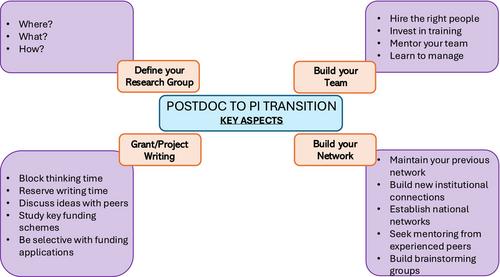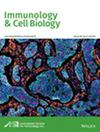向首席研究员过渡的导航。
IF 3
4区 医学
Q3 CELL BIOLOGY
引用次数: 0
摘要
经过多年的培训,成为一名首席研究员(PI)是一个令人兴奋但也充满压力和恐惧的职业转型步骤。在经历这一转变的过程中,我们很快就会发现,我们在科学培训中所掌握的技能并不一定涵盖成功管理研究小组所需的技能。虽然没有一条共同的道路可以确保所有新任首席科学家都能取得成功,但我们中的很多人都会遇到类似的障碍。本文旨在反思我最近的经历,以及开始这一转变 2 年后的失误,希望能突出一些关键方面,对未来的新首席研究员有所帮助。本文章由计算机程序翻译,如有差异,请以英文原文为准。

Navigating the transition to Principal Investigator
As the result of many years of training, becoming a Principal Investigator (PI) is an exciting but also stressful and intimidating career transition step. While navigating this transition we quickly find out that the skills we have crafted throughout our scientific training do not necessarily cover those required to successfully run a research group. Although there is not a common path to ensure success for all new PIs, many of us encounter similar hurdles. The aim of this article is to reflect on my recent experience and mistakes 2 years after initiating this transition, in the hope of highlighting some key aspects that may be beneficial for future new PIs.
求助全文
通过发布文献求助,成功后即可免费获取论文全文。
去求助
来源期刊

Immunology & Cell Biology
医学-免疫学
CiteScore
7.50
自引率
2.50%
发文量
98
审稿时长
4-8 weeks
期刊介绍:
The Australasian Society for Immunology Incorporated (ASI) was created by the amalgamation in 1991 of the Australian Society for Immunology, formed in 1970, and the New Zealand Society for Immunology, formed in 1975. The aim of the Society is to encourage and support the discipline of immunology in the Australasian region. It is a broadly based Society, embracing clinical and experimental, cellular and molecular immunology in humans and animals. The Society provides a network for the exchange of information and for collaboration within Australia, New Zealand and overseas. ASI members have been prominent in advancing biological and medical research worldwide. We seek to encourage the study of immunology in Australia and New Zealand and are active in introducing young scientists to the discipline.
 求助内容:
求助内容: 应助结果提醒方式:
应助结果提醒方式:


